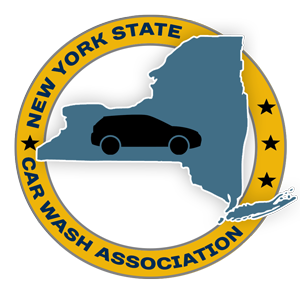Finding, hiring and keeping good employees
By the time you are reading this, we “should be” in the beginning stages of spring, as of right now though, cold winds and drifting snows and thankfully salty cars, blanket most of the Northeast.
On January 1 the minimum wage in New York State increased to $8.75 an hour with another scheduled increase to $9.00 in 2016. Whether you agree or disagree about raising the minimum wage or not, the fact is, it’s happening.
Increases in employee wages, especially for our entry-level staffs have more of an impact on our bottom lines than you might think. In most operations, labor is the largest operational expense operators face. There is the cost of advertising for the positions we need to fill, the hiring expense, uniforms, the time involved in processing the paperwork, training cost, and lost productivity as the employee get’s up to speed, etc. The challenges of operating a business that is so dependent on events out of our control — the weather — can be daunting. Finding the balance between staffing and production is a task that changes by the hour. Balancing the need to provide hours to valuable employees vs. having to reduce staff due to poor weather or volumes is one of the most difficult tasks to running our businesses. The New York State Car Wash Association (NYSCWA) is monitoring the minimum wage discussions in Albany and we are staying in close contact with our Lobbyist, Bill Crowell, to make sure we are aware of any proposed changes to the minimum wage discussions at the state Capitol. It’s time to look at things differently, measure differently and focus on the “little things” to combat this increase.
With this as a backdrop, I would like to share an email I received from our company’s Human Resources Manager, Vic Kulpa. “About a week ago you received a spreadsheet showing the number of hires each month at all of our locations during 2014. The spreadsheet that is attached shows not only that number but also the number of terminations that occurred at each location during the same period of time. When you look at the total number and the numbers of employees who were hired and terminated in the same year, you should see a problem that needs to be addressed quickly.”
In 2014, the number of terminations for the entire company outnumbered the total number of employee hires. It represents a great deal of wasted time and expense for both the operations and staff parts of the business. A trend that is not uncommon in entry-level service business operations).
So, what do we do to fix this problem?
First, we need to understand what type of employees we are looking for: experienced vs. “will train;” full time, variable time or part time? Do we really need the new hire or is there another way to address the work? Can current employees be trained to take on more responsibility and workload? Are all my employees working to their potential or are some just going through the motions; am I just filling a slot with a warm body?
Second, I think we should revisit what the job requirements are and make changes to our ads, if necessary, to accurately reflect the work and the applicants that we wish to attract.
Third, managers should spend time brushing up on their interviewing techniques. If you have delegated this task, then spend some time listening to the interviews being conducted in your store.
Fourth, I know you have heard it before, but you only get one chance to make a great impression, and that goes for bringing our new employees on board. Getting someone excited to work here starts with the first contact, the first handshake, then the interview and the selection. By the time the employee starts, we should have used at least three opportunities to make sure they know how happy we are to have them join us and what lies ahead for them.
Fifth, make the orientation process one that they will remember. The first few days, weeks and months are very important if you are going to retain the talent that you have already worked hard to attract.
And finally, do not underestimate the value of continuous coaching for your veteran employees. They will be the ones who help you develop and keep the new talent that you bring in. I just read an article that the New England Patriots head coach, Bill Belichick continues to meet one-on-one with his quarterback Tom Brady at least three times a week despite the fact that they have worked closely together for years. I guess you cannot argue with success. So don’t forget the employees that are already working for you unless you want to see the termination number continue to grow.”
It’s time to look at things differently. To borrow a line from our most recent Northeast Regional Carwash Convention (NRCC) Keynote Speaker Bob Benmosche, “You can have success even in the face of adversity.
Walt Hartl
NYSCWA President

